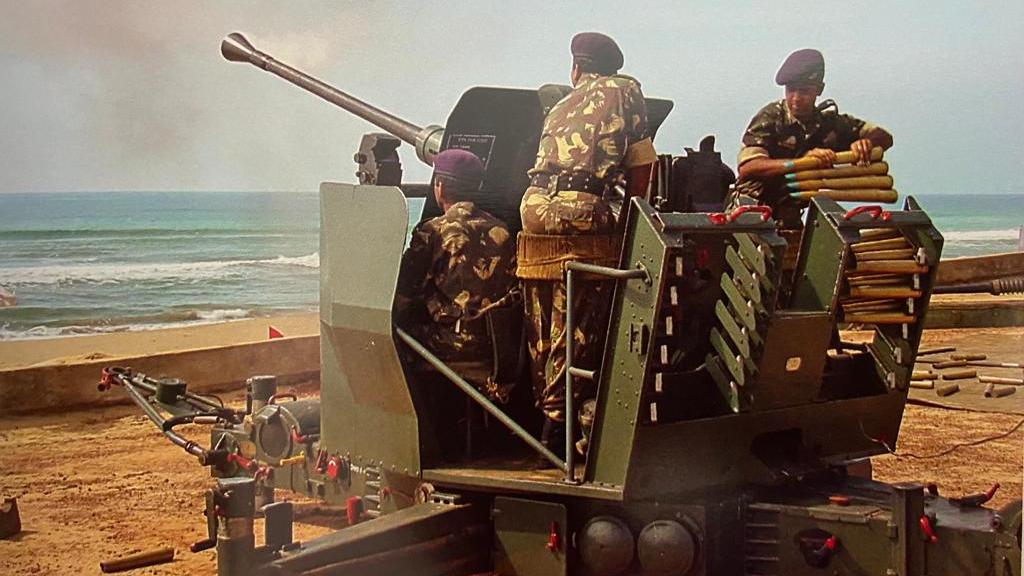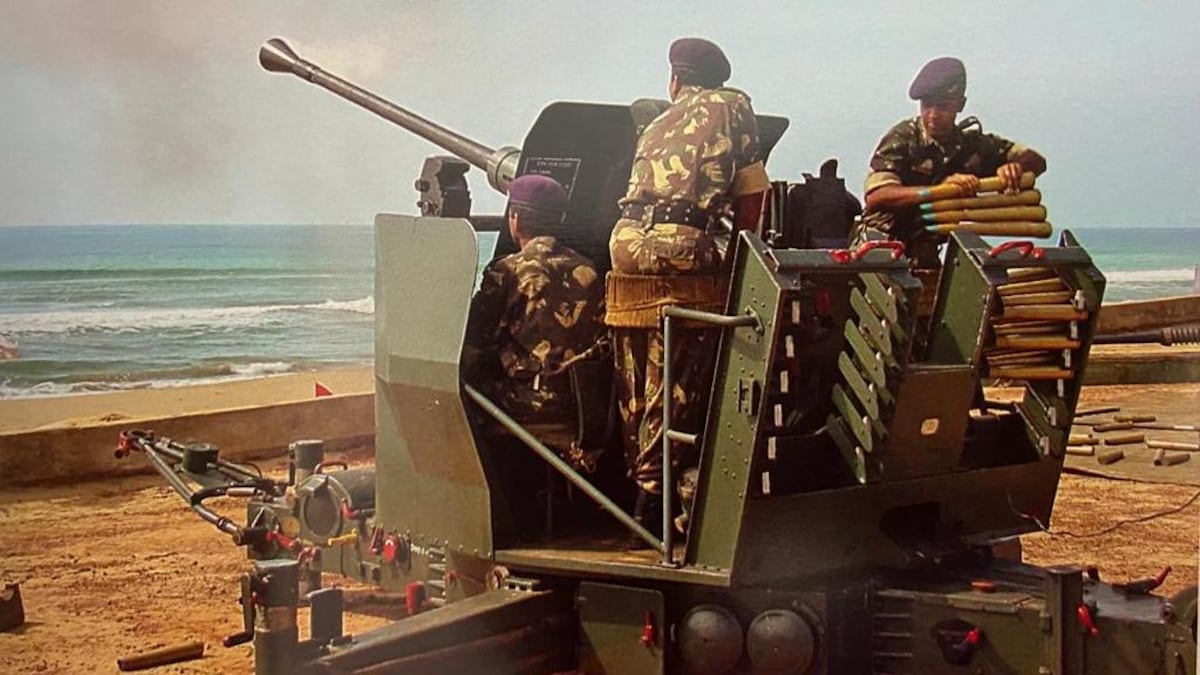
How the army is tweaking its vintage L-70 gun into a drone-killer
A new interface with existing counter drone systems allows the World War-2 era anti-aircraft gun the capability to intercept drones
A new interface with existing counter drone systems allows the World War-2 era anti-aircraft gun the capability to intercept drones
https://www.indiatoday.in/author/sandeep-unnithan
An L70 anti-aircraft gun in action
The optical sights spotted the rogue drone hovering over the target area nearly 500 metres away. The gunners studying the target in their command post gave the order to engage the target. Within seconds an L-70 gun slewed to towards the left and shot off a four-round clip into the sky. The proximity fuses inside the 40 mm shells spinning through the air exploded, creating a cloud of thousands of tungsten fragments which shattered the drone. Four days later, on September 21, the army repeated the test at the Army Air Defence College on the seafront at Gopalpur, Odisha, and successfully intercepted another 0.6 metre wide commercially purchased drone.
This is believed to be the first test of the upgraded L-70 against small drones. Part of a project started around a year ago by the Army Air Defence Corps, the system interfaces a counter-drone system made by a Hyderabad-based private player with the army’s in-service L-70 air defence gun. The counter-drone system made by Hyderbad-based Zen Technologies Ltd is similar to the one ordered by the Indian Air Force last month. The IAF placed a Rs 120 crore order for an unspecified number of counter-drone systems from the same firm. The Zen-Anti Drone Air Defence Systems or ZADS variant ordered by the IAF, is primarily a ‘soft kill’ system. It detects and jams radio frequency emissions from the drone between 10 metres and 10 kilometres. The firing trials in Gopalpur are the first use of it as a ‘hard kill’ system, where it physically destroys the drone.
The interception played out as follows—the radio frequency detector on the ZADS indicated the direction of the approaching drone, the day and night camera aligned itself towards the target and zoom searched to estimate its approximate range. The system then passed target coordinates on to the L-70 gun through a customised hardware interface. The gun received the coordinates in ‘remote’ mode, aligned itself towards the target allowing the operator to lock on and fire. And all this in a matter of seconds. “This system will be more effective against swarm drones, because the upgraded gun can spew out predictive fire in the future position of the swarm, saturating the area with predictive fire,” says Lt general V.K. Saxena, former DG, Army Air Defence.
The appearance of new drone-based threats flying across the Line of Control and international boundary have presented a new range of threats to security agencies. Since 2019, Pakistan-based terrorists are using drones to drop arms and ammunition into India. On June 27, this threat made the next logical step-up—when two drones attacked the Jammu airbase dropping shaped charges which punched through a roof of a building without any casualties. It however signaled a clear and present danger—of small-sized drones being used to carry out attacks on sensitive installations and in public gatherings.
Existing ground-based air defence radars are unable to track commercially obtained drones because of their small size—a one-metre drone has the radar cross-section of a bird and can often be mistaken for one. The successful integration of the counter-drone system with legacy AD systems offers interesting in-country solutions to replace costly imports. The army can swiftly upgrade older guns like the Swedish L-70s and the Soviet-made ZSU-23 guns into drone killers. The costs are not known but are believed to be in the range of Rs 6 to Rs 8 crore per gun upgrade. The guns have to be first upgraded with an electro-optical system, like the one on the upgraded L-70, before they can be interfaced with the ZADS counter-drone system.
It will also need newer ammunition like the special proximity-fused ammunition manufactured by Bharat Dynamics Ltd (BDL)—each shell is packed with 1,000 fragments of tungsten that are detonated by a proximity fuse.
The L-70 anti-aircraft gun made by Swedish arms firm Bofors AB post the Second World War is the most widely-used air-defence gun in the armed forces. The army has approximately 1,180 guns in service that were first bought off-the-shelf in the late 1960s and later licensed produced by the Ordnance Factory Board (OFB). Around 200 guns have been upgraded by BEL under a Rs 575 crore contract some years ago. The guns are being given new electrical servo drives, electro-optical fire control system, video tracking and a new air defence radar. The upgrades however were meant primarily to tackle low flying helicopters and aircraft.





